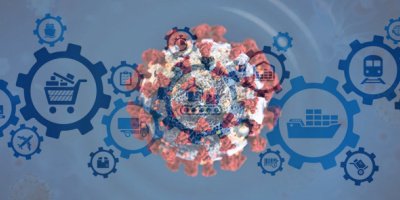IBM announces smokin' new hardware plus Technology Refreshes for IBM i 7.1 and 7.2.
Today's set of announcements for both IBM i 7.1 Technology Refresh 9 (TR9) and IBM i 7.2 Technology Refresh 1 (TR1) are pretty cool. What you have to remember is that most updates for IBM i 7.2 TR1 are included in IBM i 7.1 TR9. More details will follow. From what I understand, everything I'm writing about today is included in both TRs.
New Power Systems Models E870 and E880
I'm not a pure hardware guy, so I'll keep the specs on the new iron in relative layman's terms.
Each server will have a single system control unit and a 19-inch rack. Both systems have Custom DIMMs (CDIMMS) memory, which are 1600 Mhz DDR3 chips. In comparison, the POWER7/7+ chips were 1066 Mhz DDR2 chips.
The E870 (9119-MME) comes in a number of different configurations. The E870 will support up to 4 TB of memory.
- 32-core (one node), 4.02 Ghz processor with 359,000 CPW
- 64-core (two node), 4.02 Ghz processor with 711,000 CPW
- 40-core (one node), 4.19 Ghz processor with 460,000 CPW
- 80-core (two node), 4.19 Ghz processor with 911,000 CPW
The E870 will support up to 4 TB of memory.
The E880 (9119-MHE) has four configurations as well; however, the GA date for the heaviest iron isn't set until June 2015, so the CPW rating hasn't been released. The E880 will support up to 16 TB of memory.
- 32-core (one node), 4.35 Ghz processor with 381,000 CPW
- 64-core (two node), 4.35 Ghz processor with 755,000 CPW
- 40-core (three node), 4.35 Ghz processor. CPW to be announced later.
- 80-core (four node), 4.35 Ghz processor. CPW to be announced later.
IBM Connections 5.0 CR1
While IBM Connections has been supported on IBM i since March 2013, with version 4.5 it had to play a little bit of catch-up in order to truly become a supported stepping stone for customers with Lotus Quickr. The end of support for Quickr was announced for September 2015, and while customers with Quickr entitlements inherited IBM Connections entitlements, the components of Connections that truly enabled a migration from Quickr on the IBM i platform were not available until now. With IBM Connections 5.0 CR1, the missing piece of the puzzle, Connections Content Manager (CCM) has support for IBM i. This support will allow customers to migrate existing Quickr Places into IBM Connections communities. The underlying architecture for CCM is actually IBM FileNet, and while the CCM component for IBM i is supported in order to integrate FileNet with IBM Connections on IBM i, the FileNet server must be either AIX or Linux on x86-64. And yes, I've already asked about native IBM i or PowerLinux support. With time running out and customers with Quickr on IBM i looking for a solution that runs primarily on IBM i, IBM Connections is finally a viable option.
I'll be documenting my journey from Quickr to IBM Connections over the next few months and plan on writing articles along the way in order to ensure your migration is as painless as possible. Support for Connections 5.0 CR1 is for both IBM i 7.1 and 7.2.
Other IBM Software Group products support announced are IBM Commerce V7 Feature Pack 8 (for IBM i 7.1 only), IBM WebSphere Portal V8.5 CR1 (for IBM i 7.1 only), and IBM MQ V8 (for IBM i 7.1 and 7.2).
IBM Navigator for i
Some new features added in Navigator will help make systems management easier. For instance, have you ever wanted to go to a deeply nested folder somewhere on the Integrated File System (IFS)? Previously, you had to open the IFS and drill down through the folders in order to get to what you need to see. To minimize time, you can type the path and get there instead. To really minimize time, you can now bookmark the path as a favorite so it's literally one click away. And it's not just IFS paths. Other parts of Navigator can now be added as favorites as well—for example, host table entries or a particular DB2 schema. The Favorites link is second from the top under Set Target System, so you can't miss it.
Another cool enhancement of Navigator is with Performance Data Investigator and Collection Services. You get some new PDI perspectives, new Collection Services metrics and an enhanced left-hand navigation to make it uniform with the rest of Navigator. Also added is the ability to do a Fast Search within the Performance section in order to find reports by keyword. For instance, I care a lot about Java Virtual Machine usage. If I want to find reports with relevant statistics, all I have to do is search for "Java" or "JVM," and any report with those metrics will be presented for my selection. I'm not sure if I can add those reports to the Favorites bookmark list, but I do know I can add often-used reports to my custom perspectives list, making retrieval of needed information pretty darn fast.
With PTF management, we can now compare PTFs and PTF Groups on different systems as well as send, load, and apply PTFs and PTF Groups on multiple systems. If you run multiple boxes or partitions, then this feature makes PTF management that much faster. Also, the ability to finally clean up PTF save files has been added to Navigator. If I wanted to delete old save files, I had to go into the thick Navigator client on a Windows Virtual Machine (as I use Linux on my laptop). Forgive the shameless plug, but I need to point out that this feature was requested by the COMMON Americas Advisory Council (CAAC) on behalf of a customer not too long ago. In fact, we discussed it just this past April. A great example of IBM listening to its customers.
There are also some database updates in Navigator to improve the overall end-user experience. Database manipulation has always been a little slow and clunky on the web as opposed to the thin client. Some applications are traditionally better performing as a client. In the new version of Navigator, the Database features have been significantly optimized for a very positive, well-performing web experience.
DB2
As always, there's a bunch of DB2 improvements included in this announcement.
Find and Manipulate Data
- Regular Expressions
- New Scalar functions
Deploy complex logic using SQL
- Pipelined Table Functions
Easy access to environment detail
- New DB2 built-in Global Variables
- API access to DB2 built-in Global variables
Improved SQL programmer experience
- IBM i Debugger enhanced for SQL routines and
- triggers
- (STRDBG command and Graphical
- Debugger)
- SQL messages changed to return SQL column names
- instead of field names
- RUNSQL enhanced to allow an output listing to be
- generated
Navigator for i
- DB dialogs improved
- Better performance
System Limits Phase 3 – IFS
- Discover large IFS Objects
- Recognize accumulation of IFS objects
- React to runaway conditions
Database Monitor user filtering improved
- Choose 1-10 users or groups to monitor
- Navigator or Command interface options
- Leveraged by Guardium Database Activity Monitor
PTF Group "currency" view—Query this view and DB2 for i will:
- Consume a live XML feed from IBM PSP Group information
- Access the current partition and extract the PTF Group
- information
- Use the SQL Query Engine (SQE) to perform a live comparison
For the last bullet point, once again I'll offer a shameless plug for the CAAC and tout its great relationship with IBM to get that feature. The ability to programmatically cross-reference PTF Group levels between IBM i partitions and IBM is a great feature.
Application Development
App dev got some attention too.
Node.js Support
Node.js is a server-side, asynchronous, event-driven framework that allows for native JavaScript application development now on IBM i. It's designed to provide high throughput and efficiency. Since JavaScript is a widely used language, many developers can leverage existing skills to build new applications and tap into a large community of resources. Along with the announced support, we get two new IBM i-centric extensions:
- DB2 for i—Based on DB2CLI and supports stored procedures
- Node.js toolkit for IBM i extensions—Allows JavaScript to access IBM i native objects such as programs, commands, message queues, jobs, system values, etc.
Node.js will be delivered as part of the IBM HTTP Server product (5770-DG1).
Rational Developer for i V9.1.1
There are new Code Coverage features available:
- Batch support
- Interactive support
- Enhanced user experience
- Leverage SEP breakpoints—Start code coverage when program x is called by user y.
Also, new Push to Client features are available as well:
- Update client workspaces from a central IBM i server—Automated updates
- RSE connections
- Filters
- Eclipse Preferences
- Update templates—Free-form RPG and SQL, COBOL, C/C++, Database Connections, RSE Compile Actions, RSE User Actions
Backup Recovery and Media Services (BRMS)
New device support: BRMS support is added for new Enterprise tape device
TS1150 (Device type 3592 models E07 and EH7)
Backup automation: STRBKUBRM will automatically remount file systems
after a backup is run for a control group during backup of Integrated File System
(IFS) objects.
Added capability to process journal entries that start with "Q": Control
group entries *ALLCHGRCV and *ALLDTCRCV have been enhanced to process
journals in libraries that start with "Q" when they are specified in object lists
QCHGJRNRCV and QDTCJRNRCV
Easier-to-print reports: Parameter changes for Print Report using BRM
(PRTRPTBRM) command
- Now supports multiple values on From system (FROMSYS)
- Now supports Use save files (USESAVF) and TSM (USEADSM)
Additional options for BRMS object lists:
- Now have capability to "omit" objects
- *ALLUSR is now a valid value for the library name field, and individual
- library save timestamps are provided—RPG, COBOL, C, C++, SQL, DDS
IBM i Minimum Load Source Size
On April 28, 2014, the minimum load source announced for IBM i 7.2 was 70 GB usable space. In this new announcement, the minimum load source for IBM i 7.2 TR1 can be a minimum of 35 GB usable space for external storage LUNs and virtual disk. Standard SAS and SCSI will still be at a minimum of 70 GB usable space.
There will be PTFs available in November before upgrading to IBM i 7.2, so watch this space.






















 More than ever, there is a demand for IT to deliver innovation. Your IBM i has been an essential part of your business operations for years. However, your organization may struggle to maintain the current system and implement new projects. The thousands of customers we've worked with and surveyed state that expectations regarding the digital footprint and vision of the company are not aligned with the current IT environment.
More than ever, there is a demand for IT to deliver innovation. Your IBM i has been an essential part of your business operations for years. However, your organization may struggle to maintain the current system and implement new projects. The thousands of customers we've worked with and surveyed state that expectations regarding the digital footprint and vision of the company are not aligned with the current IT environment. TRY the one package that solves all your document design and printing challenges on all your platforms. Produce bar code labels, electronic forms, ad hoc reports, and RFID tags – without programming! MarkMagic is the only document design and print solution that combines report writing, WYSIWYG label and forms design, and conditional printing in one integrated product. Make sure your data survives when catastrophe hits. Request your trial now! Request Now.
TRY the one package that solves all your document design and printing challenges on all your platforms. Produce bar code labels, electronic forms, ad hoc reports, and RFID tags – without programming! MarkMagic is the only document design and print solution that combines report writing, WYSIWYG label and forms design, and conditional printing in one integrated product. Make sure your data survives when catastrophe hits. Request your trial now! Request Now. Forms of ransomware has been around for over 30 years, and with more and more organizations suffering attacks each year, it continues to endure. What has made ransomware such a durable threat and what is the best way to combat it? In order to prevent ransomware, organizations must first understand how it works.
Forms of ransomware has been around for over 30 years, and with more and more organizations suffering attacks each year, it continues to endure. What has made ransomware such a durable threat and what is the best way to combat it? In order to prevent ransomware, organizations must first understand how it works. Disaster protection is vital to every business. Yet, it often consists of patched together procedures that are prone to error. From automatic backups to data encryption to media management, Robot automates the routine (yet often complex) tasks of iSeries backup and recovery, saving you time and money and making the process safer and more reliable. Automate your backups with the Robot Backup and Recovery Solution. Key features include:
Disaster protection is vital to every business. Yet, it often consists of patched together procedures that are prone to error. From automatic backups to data encryption to media management, Robot automates the routine (yet often complex) tasks of iSeries backup and recovery, saving you time and money and making the process safer and more reliable. Automate your backups with the Robot Backup and Recovery Solution. Key features include: Business users want new applications now. Market and regulatory pressures require faster application updates and delivery into production. Your IBM i developers may be approaching retirement, and you see no sure way to fill their positions with experienced developers. In addition, you may be caught between maintaining your existing applications and the uncertainty of moving to something new.
Business users want new applications now. Market and regulatory pressures require faster application updates and delivery into production. Your IBM i developers may be approaching retirement, and you see no sure way to fill their positions with experienced developers. In addition, you may be caught between maintaining your existing applications and the uncertainty of moving to something new. IT managers hoping to find new IBM i talent are discovering that the pool of experienced RPG programmers and operators or administrators with intimate knowledge of the operating system and the applications that run on it is small. This begs the question: How will you manage the platform that supports such a big part of your business? This guide offers strategies and software suggestions to help you plan IT staffing and resources and smooth the transition after your AS/400 talent retires. Read on to learn:
IT managers hoping to find new IBM i talent are discovering that the pool of experienced RPG programmers and operators or administrators with intimate knowledge of the operating system and the applications that run on it is small. This begs the question: How will you manage the platform that supports such a big part of your business? This guide offers strategies and software suggestions to help you plan IT staffing and resources and smooth the transition after your AS/400 talent retires. Read on to learn:
LATEST COMMENTS
MC Press Online